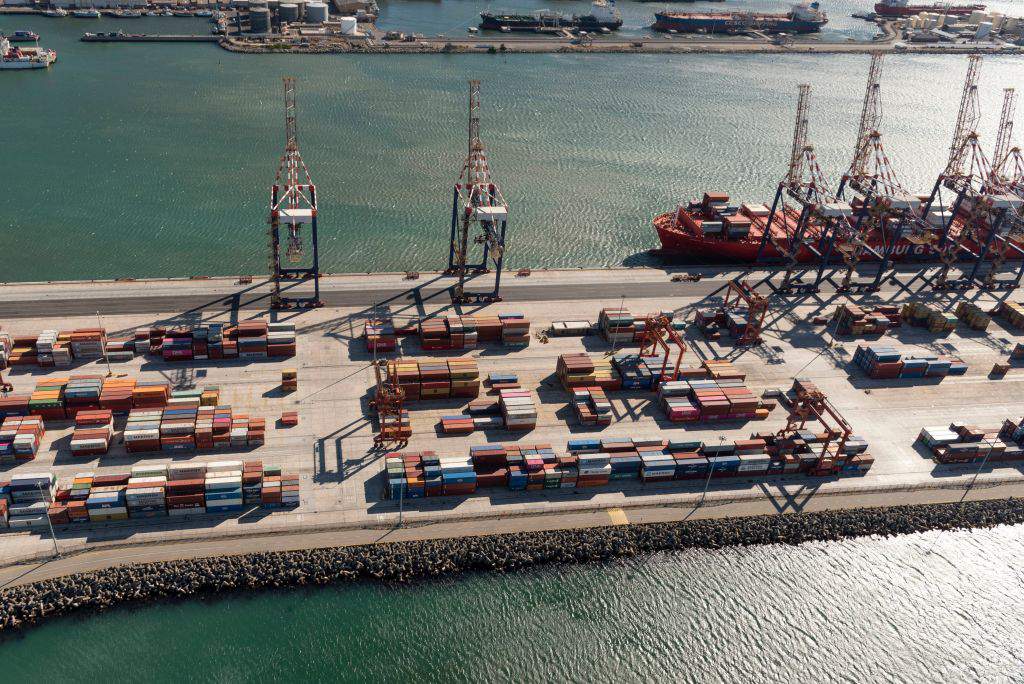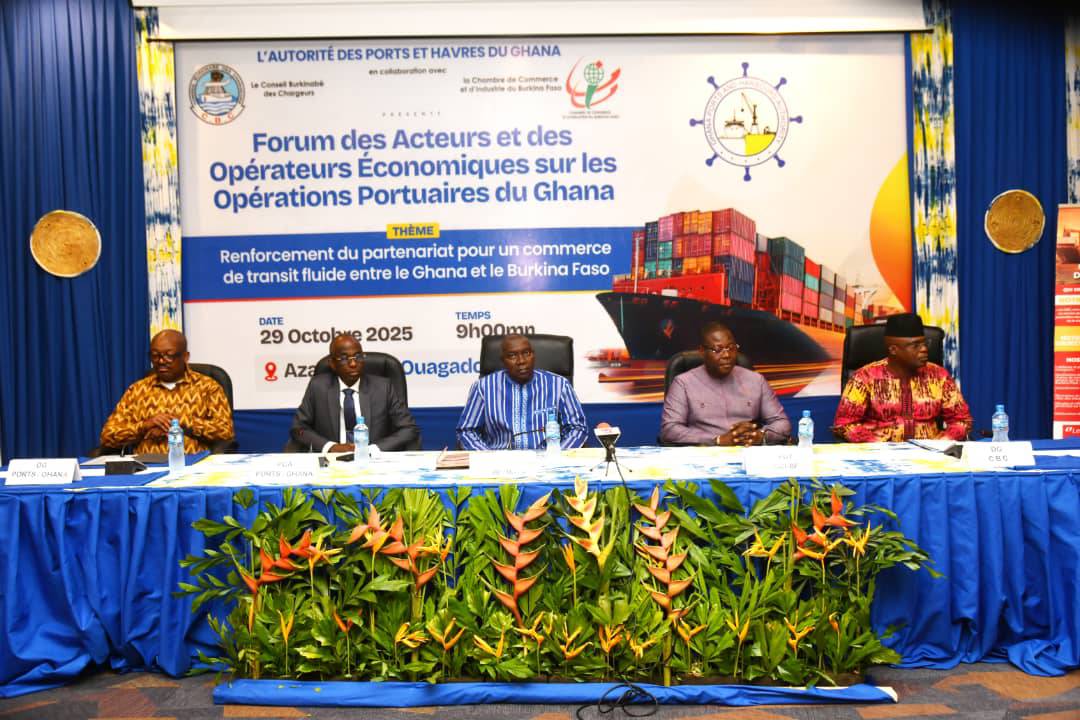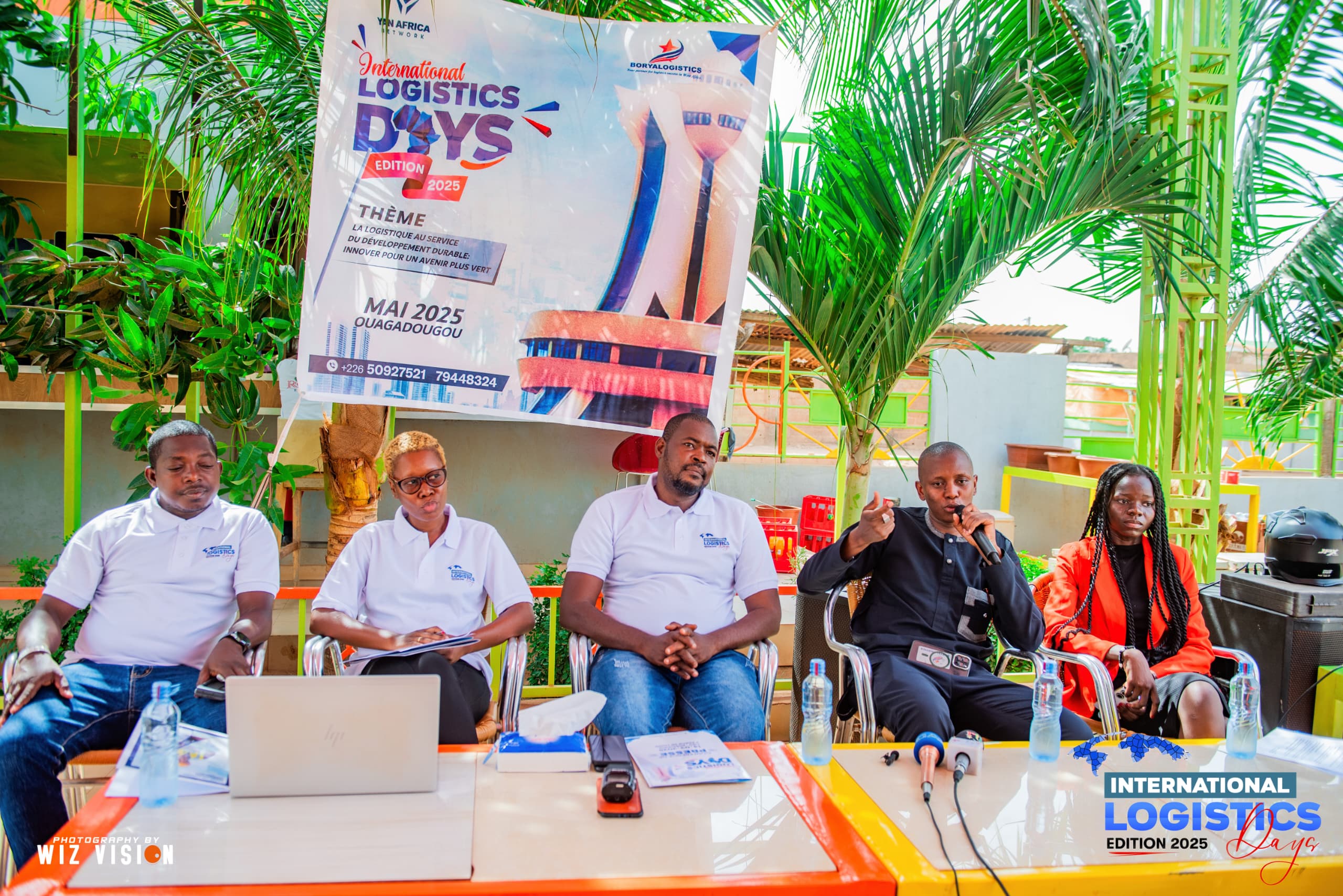Since their withdrawal from ECOWAS in 2024, the three landlocked nations forming the Alliance of Sahel States (AES) — Burkina Faso, Mali, and Niger — have sought to assert their sovereignty. Representing a combined population of around 77 million, their trade remains crucial for West Africa’s coastal economies.
Recent political instability in AES countries has weakened traditional trade routes, paving the way for new logistical corridors that are reshaping regional commerce dynamics. Historically, major trade routes ran through the ports of Cotonou, Lomé, Abidjan, and Dakar.
Historic Corridors in Transition
Dakar (Senegal): A Dominant Position Under Strain
Historically, the Port of Dakar served as Mali’s main maritime gateway, handling 70–80% of its imports and exports — a trade volume worth nearly 1.7 trillion CFA francs for Senegal before recent political upheavals. The Dakar–Bamako corridor still sees heavy truck traffic daily.
Senegal has modernized its operations through the Guichet Unique d’Enlèvement Portuaire (GUEP) digital platform, cutting processing times by 40%. The upcoming Ndayane Port — designed for full digitalization, sub-24-hour clearance, and AI-assisted management — is expected to cement Senegal’s role as a regional logistics hub. A planned dry port in Sandiara (100 km from Dakar) aims to bring services closer to Malian operators.
However, regional sanctions imposed by ECOWAS and UEMOA have reduced Malian traffic by 7.6%, redirecting part of the flow toward Nouakchott, Conakry, and Abidjan.
Abidjan (Côte d’Ivoire): Modernization and Trade Incentives
With a traffic volume of nearly 34.8 million tons in 2023, the Port of Abidjan (PAA) remains a heavyweight in West Africa. In the first half of 2023, transit traffic to AES countries accounted for 8.5% of total volume — over 2 million tons.
Despite a 6% decline due to insecurity and the Niger embargo, Abidjan remains attractive thanks to its extensive road and rail network. The 1,145-km Abidjan–Ouagadougou railway transports around 900,000 tons of freight annually to Burkina Faso. The planned Ferkessédougou dry port is also designed to serve Burkinabe and Malian operators.
The PAA is making major investments — 34 quays, specialized terminals, and 900,000 m² of warehouses. Private players such as Africa Global Logistics (AGL) plan to invest over €60 million to create logistics hubs (cold storage, regional platforms) in Ferkessédougou, Bouaké, and San Pedro.
Abidjan offers incentives such as 30% reductions in port fees for bulk transit and targeted tax exemptions to attract AES traffic. However, urban density limits the port’s physical expansion, while growing competition — especially from the Guinean corridor — poses new challenges.
The Rise of New Competitors
Conakry (Guinea): Leveraging Proximity and Sanctions
Although geographically closer to Bamako (991 km) than Dakar or Abidjan, the Port of Conakry (PAC) initially handled less than 5% of Mali’s trade. However, the 2022 ECOWAS embargo allowed the PAC to capture up to 20% of Malian traffic.
Guinea has introduced aggressive tariff measures — a 50% reduction in bulk handling fees, 21-day free storage, and VAT exemptions — while streamlining customs clearance from seven days to two. A cooperation protocol has also been established for the Conakry–Ouagadougou corridor, with a Burkinabe liaison office planned at the port. The Conakry–Bamako road corridor is known for being in good condition and relatively free of harassment.
However, high maritime costs — up to USD 1,000 more per container than to Dakar or Lomé — remain a major obstacle, limiting use of the Conakry corridor by Mali, Burkina Faso, and Niger.
Lomé (Togo): Neutrality and State-of-the-Art Infrastructure
Regularly ranked among the world’s top 100 container ports, the Port of Lomé (PAL) has long been a key partner. In 2022, AES countries accounted for more than 92% of PAL’s transit volume, dominated by Burkina Faso (80.48%).
Lomé continues to invest: a natural 16-meter draft allows access to ultra-large vessels; digital platforms facilitate online payments and documentation; redundant road checkpoints have been eliminated; and customs systems are now interconnected with AES countries. The PAL also conducts active promotion missions and collaborates closely with the Togolese Revenue Office (OTR) to streamline corridors and reduce delays.
Despite longer road distances in some cases, the PAL consolidates its role through diplomatic neutrality (acting as a mediator between AES and ECOWAS) and world-class infrastructure.
Morocco’s Atlantic Initiative: A Giant in the Making
Amid regional uncertainty, AES countries are diversifying their options. Leveraging its logistical expertise, Morocco is advancing the Atlantic Port of Dakhla megaproject, launched in 2021. The Royal Atlantic Initiative for the Sahel aims to give Sahelian countries direct access to the Atlantic Ocean.
Scheduled for completion between 2028 and 2029, the port will have a capacity of 35 million tons per year. The $1.3 billion investment plan envisions multimodal corridors (road and rail) connecting Dakhla through Mauritania to Mali, Burkina Faso, and Niger. Once operational, the corridor could cut import/export costs and transit times by 20–30%.
Conclusion: A Beneficial Competition
The AES’s drive to reduce its dependence on traditional corridors (Dakar, Abidjan, Lomé, Cotonou) has sparked fierce competition, fostering the rise of new routes (Conakry, Nouakchott, and soon Dakhla). This “battle of the corridors” may ultimately benefit AES populations by lowering import costs and enhancing the global value of their exports.






